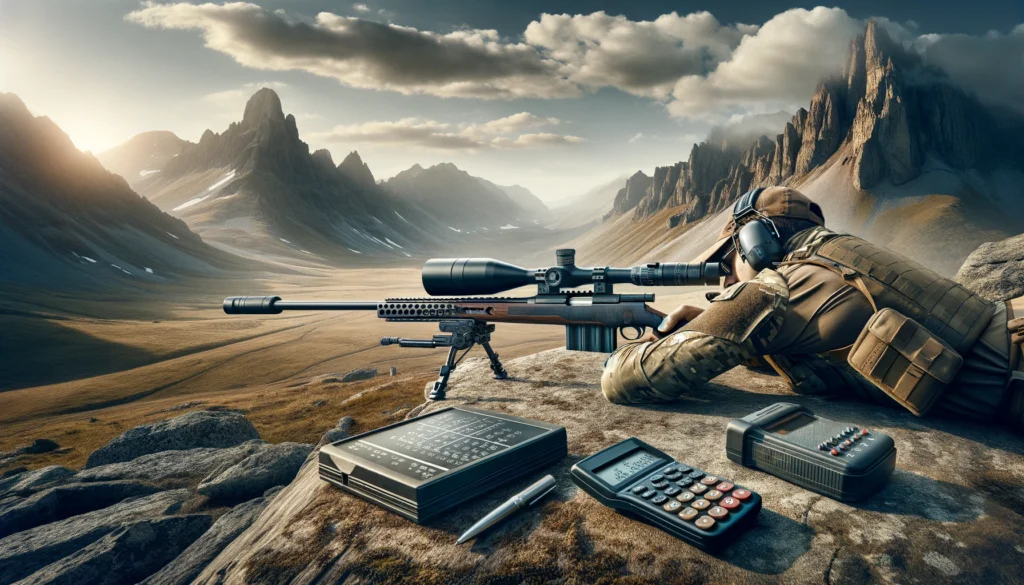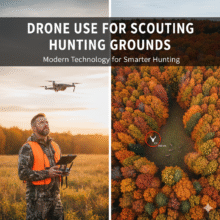Mastering Extreme Angle Shooting: Techniques for Accuracy Beyond the Flat Range

Table of Contents
Introduction
Shooting at extreme angles, whether uphill or downhill, presents unique challenges that go beyond the skills required for flat terrain shooting. These scenarios are common in hunting, tactical operations, and competitive shooting, necessitating an understanding of how gravity and angle affect bullet trajectory. This guide explores key techniques and considerations to improve accuracy in extreme angle shooting.
1. Understanding Ballistic Trajectory
1.1 Gravity’s Influence
- Vertical Component: Gravity acts directly downward, affecting only the vertical component of the bullet’s trajectory. This means bullets will drop less than expected in both uphill and downhill shooting scenarios, requiring adjustments to aim.
1.2 Projectile Path
- Curved Trajectory: Bullets travel in a curved path. When shooting at an angle, the distance over which gravity acts is shorter than the line-of-sight distance, leading to less bullet drop over the effective range.
2. Calculating the Angle
2.1 Angle Measuring Tools
- Utilizing Technology: Devices like laser rangefinders with built-in angle compensation can provide accurate angle measurements, crucial for making precise shooting adjustments.
2.2 Manual Calculation
- Cosine Method: For those without technology at hand, understanding the cosine of the angle can help in manual calculations to adjust for effective shooting distance.
3. Adjusting Your Aim
3.1 Using Angle Compensation
- Compensated Distance: Once the angle is determined, use the compensated distance (horizontal distance to target) for your shot calculation instead of the actual line-of-sight distance.
3.2 Practice with Purpose
- Real-World Application: Regularly practice at ranges that offer varied terrain or use targets set at different angles to develop an intuitive understanding of how much adjustment is needed.
4. Equipment Considerations
4.1 Scope Adjustments
- Dialing for Elevation: Ensure your rifle scope is capable of making precise elevation adjustments or has a reticle designed for holdover points, aiding in angle shooting.
4.2 Stable Shooting Platform
- Maintaining Stability: When shooting at extreme angles, maintaining a stable shooting position is more challenging. Use bipods, shooting sticks, or other stabilizing equipment to help manage recoil and maintain accuracy.
5. Emphasizing Safety
5.1 Beyond the Target
- Awareness of Trajectory: Always be aware of what lies beyond your target, especially when shooting at angles, as bullets can travel significantly farther if they miss or pass through the target.
5.2 Environmental Awareness
- Considerations for Angle Shooting: Pay attention to environmental factors like wind speed and direction, which can further complicate angle shots. Crosswinds can have a more pronounced effect on bullet drift when shooting at an incline or decline.
6. Training and Simulation
6.1 Simulation Software
- Technological Aids: Leverage ballistic simulation software to understand how various angles and environmental conditions affect your bullet’s trajectory. This theoretical knowledge complements practical experience.
6.2 Dry-Firing Practice
- Skill Refinement: Dry-firing with your firearm can be particularly beneficial for practicing trigger control and stability in shooting positions tailored for extreme angles. Ensure your firearm is unloaded and pointed in a safe direction.
7. Mental Preparation
7.1 Visualization Techniques
- Anticipating Scenarios: Mental rehearsal is as crucial as physical practice. Visualize different shooting angles and scenarios to mentally prepare for the adjustments needed for each.
7.2 Managing Pressure
- Staying Focused: Whether in competition or hunting, shooting at extreme angles often comes with added pressure. Developing strategies to manage stress and maintain focus can improve performance under pressure.
8. Understanding Your Limitations
8.1 Knowing When to Shoot
- Ethical Considerations: Recognize situations where a shot is not feasible or ethical due to angle, distance, or environmental conditions. The safety of others and the humane treatment of animals should always come first.
8.2 Continuous Learning
- Seeking Improvement: Mastery in extreme angle shooting is a continuous journey. Always look for ways to learn and improve, whether through personal practice, mentorship, or advanced courses.
9. Community Engagement and Learning
9.1 Learning from Others
- Sharing Experiences: Engage with a community of shooters and hunters who specialize in extreme angle shooting. Forums, social media groups, and local clubs can be excellent resources for tips and shared learning experiences.
9.2 Participating in Workshops
- Hands-On Learning: Attend workshops and training sessions focused on extreme angle shooting. Direct instruction and the opportunity to ask questions can accelerate your learning curve.
Conclusion
Mastering extreme angle shooting demands a blend of theoretical knowledge, practical skill, and the right equipment. By understanding the effects of gravity, learning to calculate shooting angles accurately, and practicing under varied conditions, shooters can significantly improve their precision in challenging terrains. Remember, safety and ethical shooting practices should always be paramount.
Frequently Asked Questions (FAQs)
How often should I practice extreme angle shooting?
- Practice as often as you can, especially in the terrain types where you most frequently shoot or hunt. This could range from monthly sessions to more frequent practice if preparing for a specific event or season.
Can extreme angle shooting skills be transferred between different firearms?
- Yes, the principles of angle shooting apply across different firearms, but remember that each type of firearm and ammunition may require unique adjustments or considerations.
Is there a maximum angle at which shooting becomes too unpredictable?
- The predictability of a shot decreases as the angle becomes more extreme, typically beyond 30 degrees. However, with modern ballistics software and highly accurate equipment, shooters can still achieve remarkable accuracy at steep angles. Always prioritize safety and be aware of your limits and the capabilities of your equipment.







